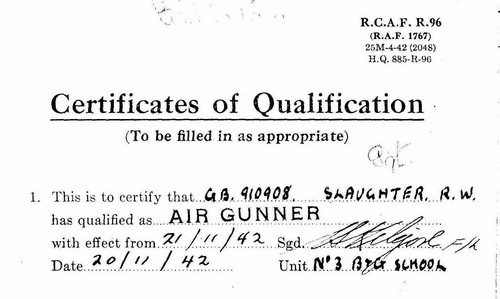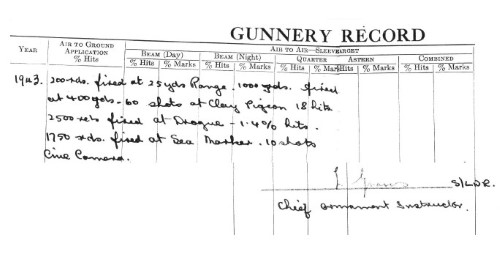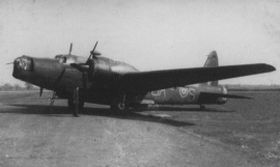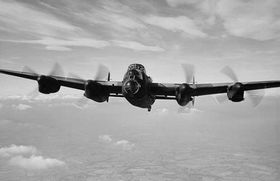Bob Slaughter's Training
January 1940
A 23 year old called Robert Slaughter is working for a company selling agricultural machinery. He joins the RAF as he is afraid of missing the war and trains in the UK to be a flight mechanic.
January 1941
Robert Slaughter boards HSS Orontes and sets sail for Canada. Two destroyers and a Hudson protect the liner. The outward journey is somewhat eventful with the liner missing a mine by a mere 50 yards. In Canada, Bob Slaughter will be maintaining the training aircraft at Carberry.
August 1942
LAC RW Slaughter begins a three month Ab Initio gunnery course at the No3 B & G School at MacDonald, Manitoba. On the 20th November he finishes the course and is promoted to Sergeant.

Following a night vision test on the 21st of December he returns early in 1943 to No16 OTU at Upper Heyford in Oxfordshire. The return journey was aboard the liner Queen Elizabeth with 17,000 troops.

At 16 OTU Bob was assessed as "Above Average".

April 1943
On the 3rd April Sgt Slaughter has his first flight with a Pilot Officer Randall in Wellington W1743. On the 26th April 1943, after 43 hours of daytime flying and 32 hours night time as Air Gunner, Sgt Slaughter completes his time at No 16 OTU.

May 1943
A week's intensive fighter affiliation training at No 1485 B & G Fulbeck is followed by a further three weeks at No1654 Conversion Unit at Wigsley. It is here that Sgt Slaughter and his crew will learn to fly and fight in the Lancaster MkIII.

June 14th 1943
Following a final bullseye (navigational) exercise from Wigsley to Ireland and Dumfries Sgt Slaughter and the rest of his crew are deemed ready to be posted to an operational squadron. The crew has 16 hours daylight and 18 hours nightime experience of the Avro Lancaster. Bob now has a total of 83 hours daylight and 51 hours of night flying in his logbook. It is eight months to the day since his first training flight in a Fairey Battle.